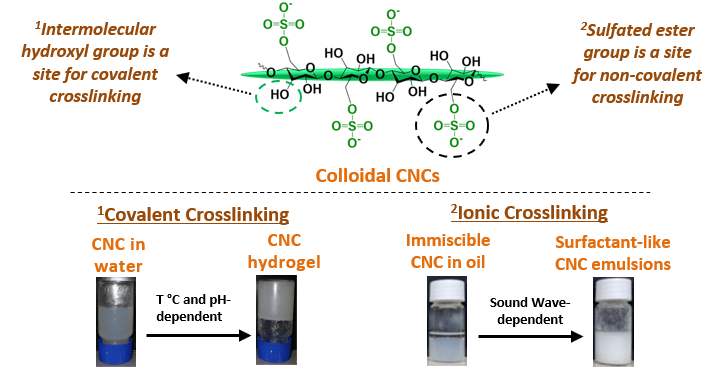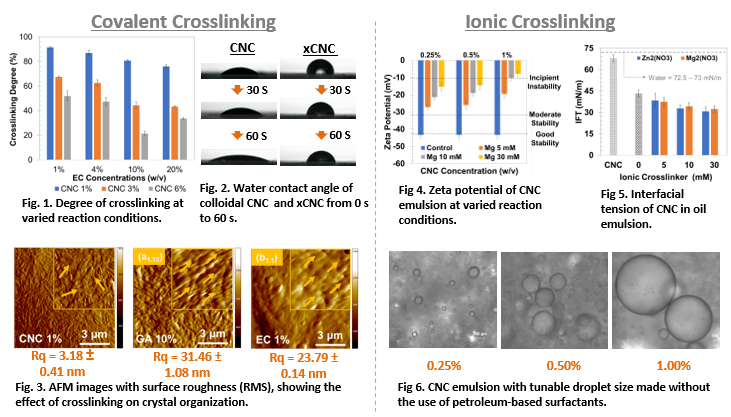Interface Engineering of Cellulose Nanocrystals for Multifunctional Materials
Student: Joseph Batta-Mpouma
Degree: Ph.D., August 2021
Major Professor: Dr. Jin-Woo Kim
Research Area(s):
Nanoscale Materials & Devices
Background/Relevance
- Cellulose nanocrystals (CNCs), rod-like biomaterials, are known for their unique physicochemical and mechanical properties
- CNCs have been used as fillers for petroleum-based polymers due to their surface chemistry activities along the hydrophobic (2 0 0), and hydrophilic (1 1 0) and (1 1 ̅ 0) plane directions
- However, the H bonding between CNCs, used alone, leads to structural instability of the molecular crystal–based network
Innovation
- To control the intermolecular H-bond, and develop advanced materials with CNCs as building blocks for their practical uses in dry and wet environment
Approach

Key Results

Conclusions
-
Crosslinking CNCs led to control of intermolecular H-bond with formation of stable hydrogels and surfactant-like emulsions
-
Oscillatory frequency tests showed that structural deformations can be modulated by varying degrees of crosslinking
-
Micrographes showed self-alignment of crystals with varied surface roughness, confirming the relationship between crystal alignment and wetting properties of the engineered materials
Future Work
-
Achieve CNC-based nano/microstructures and implement their uses in pharmaceutical, coating, and agriculture industries
